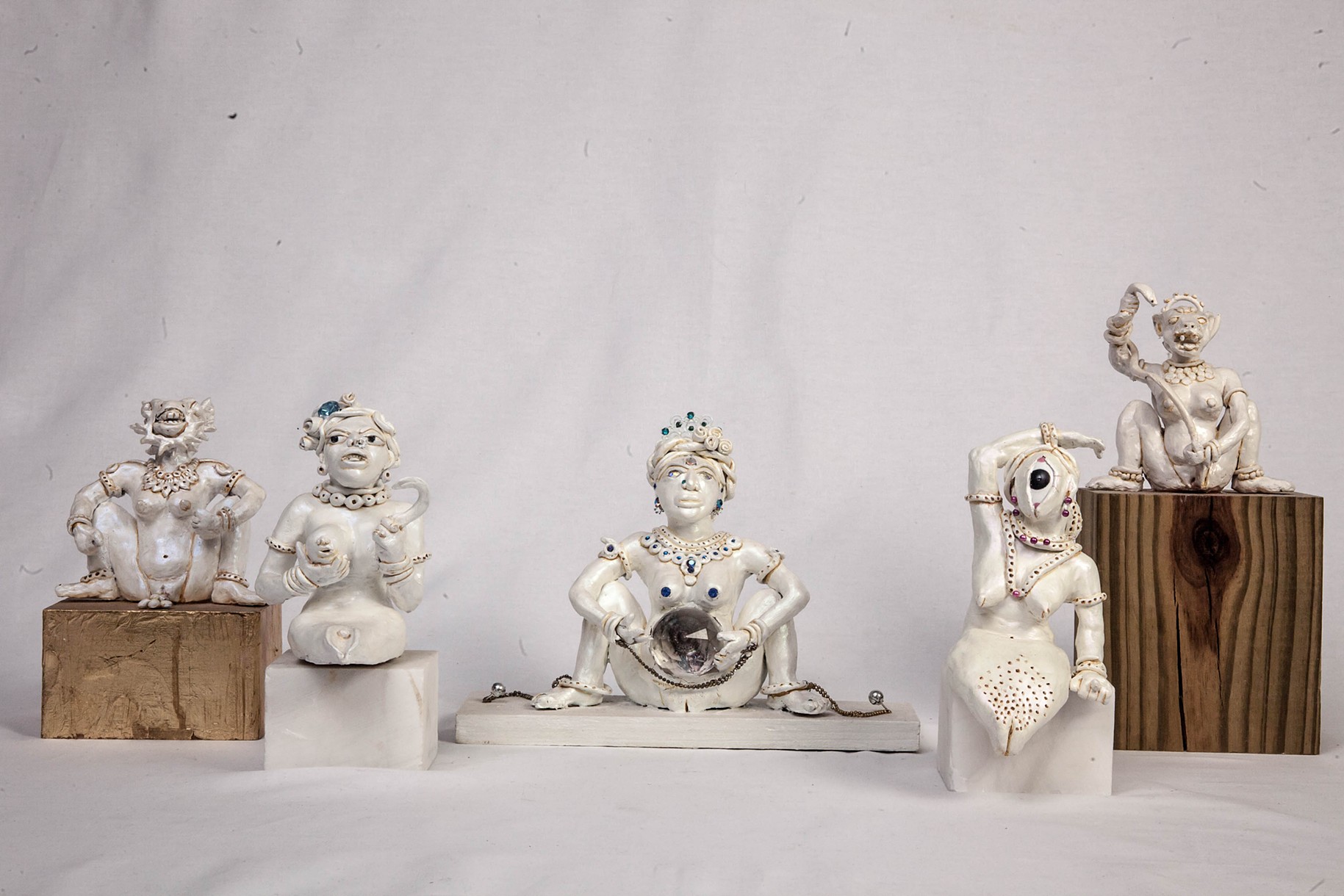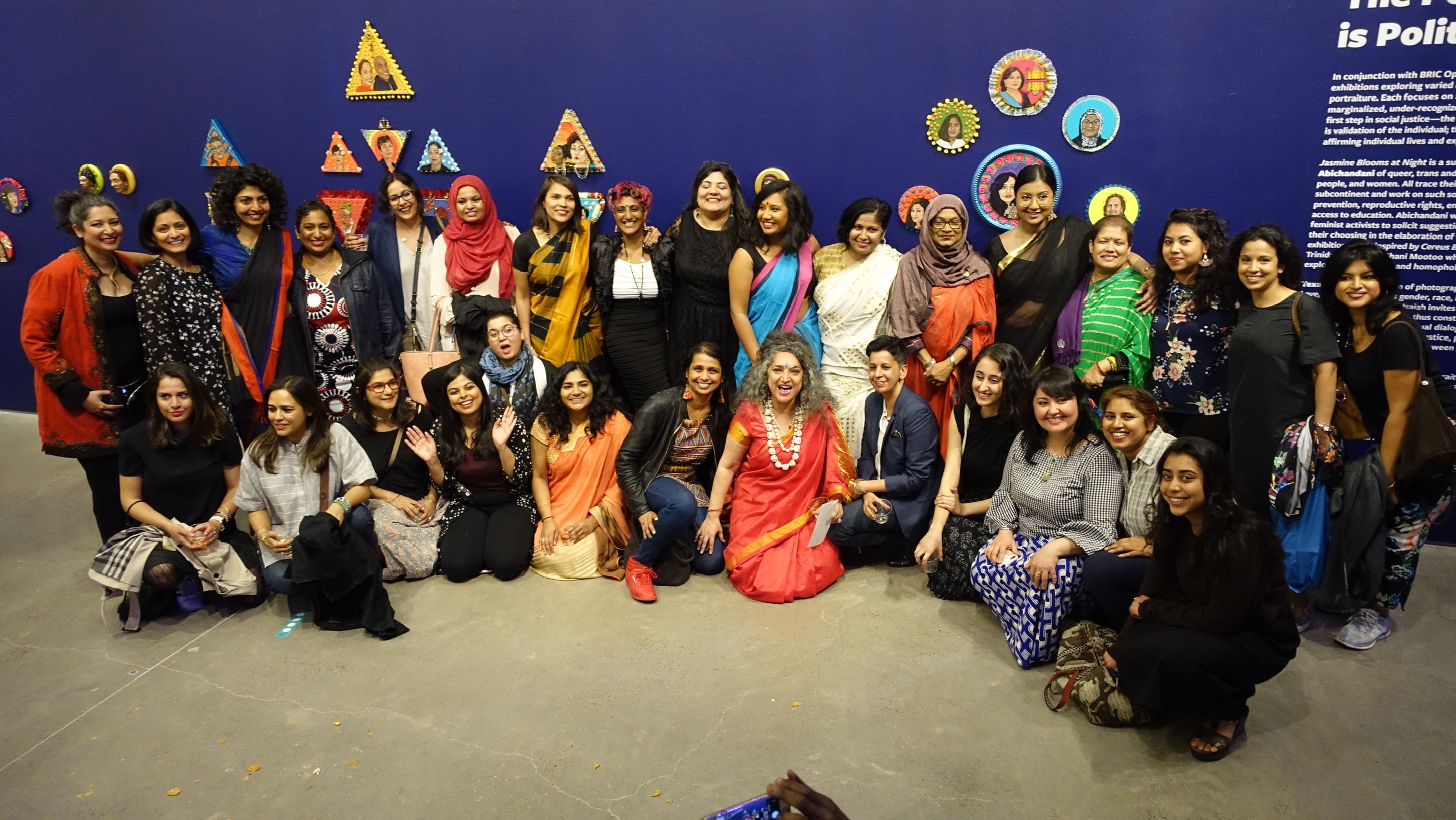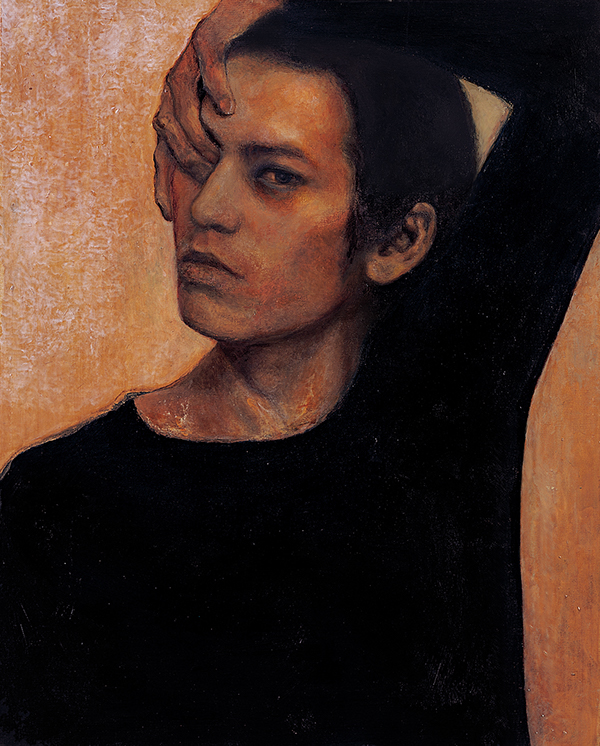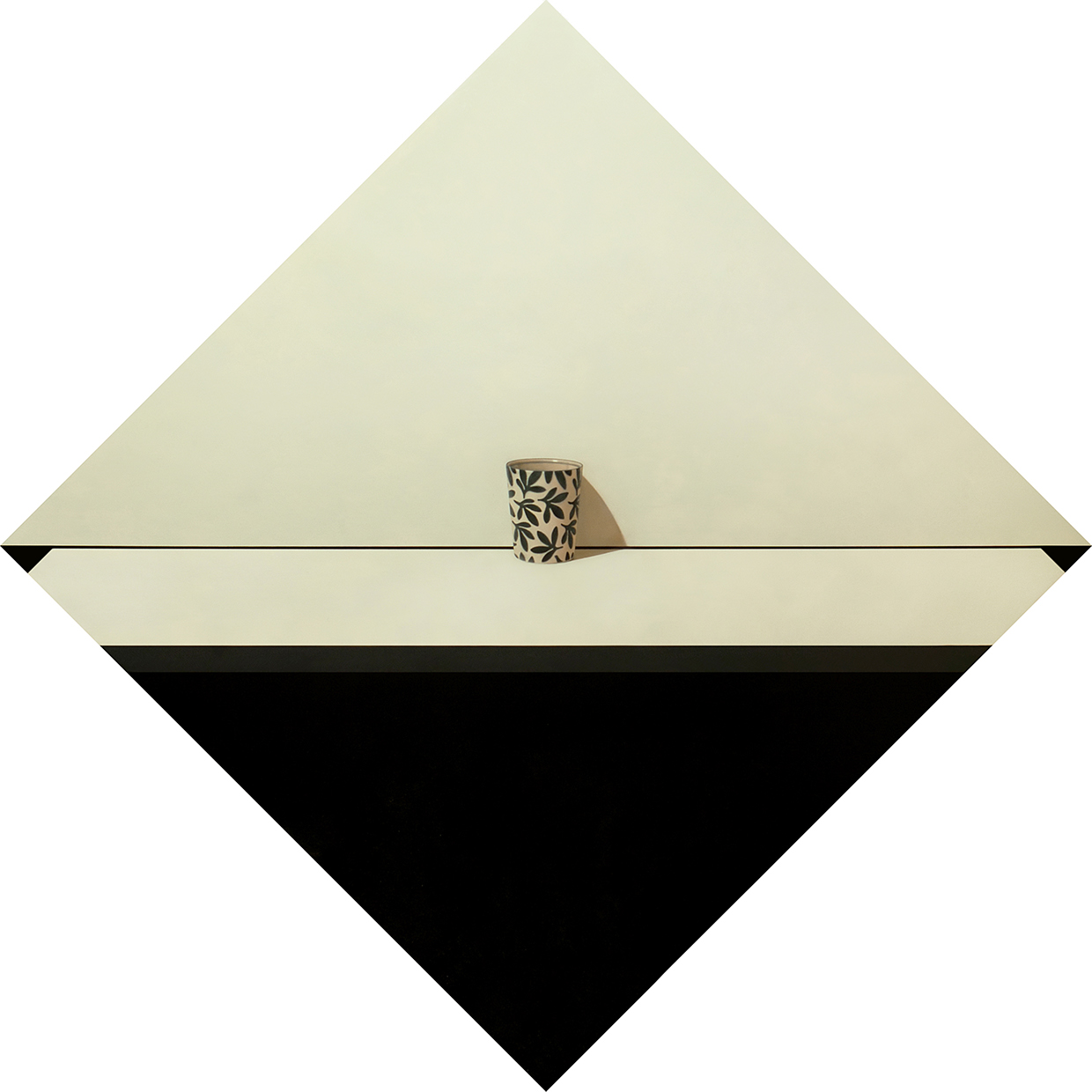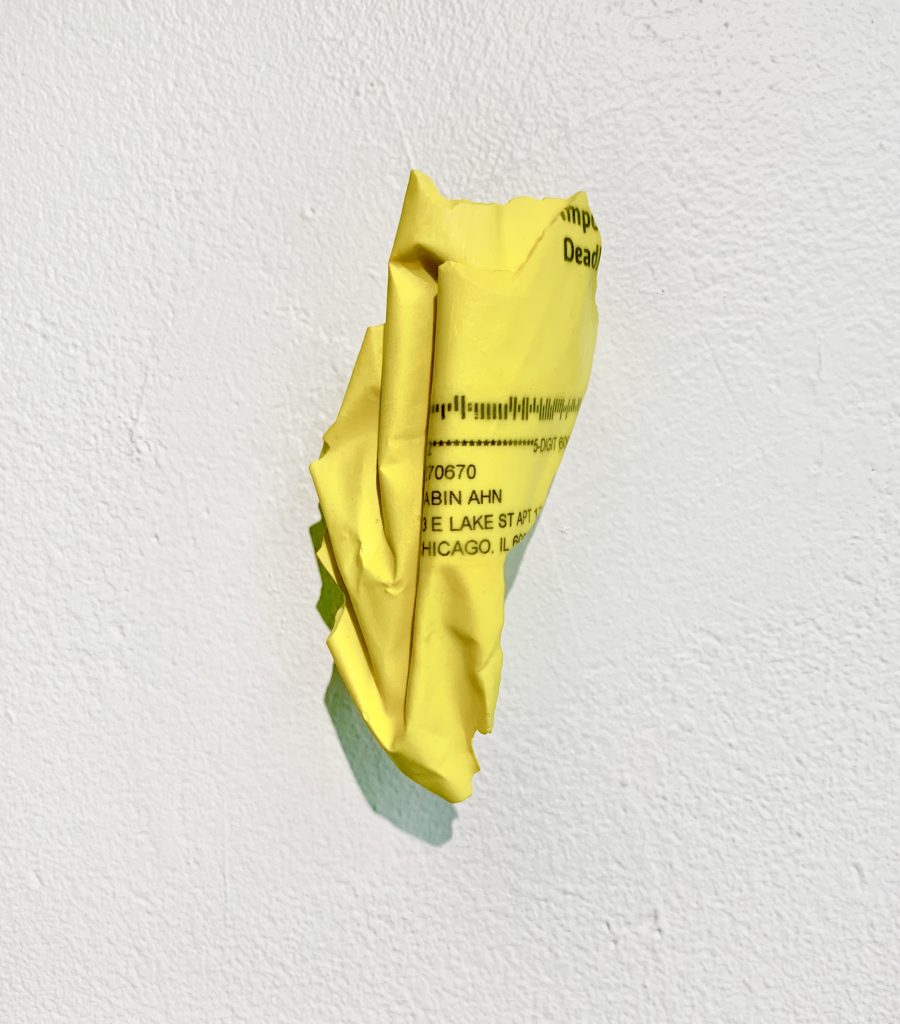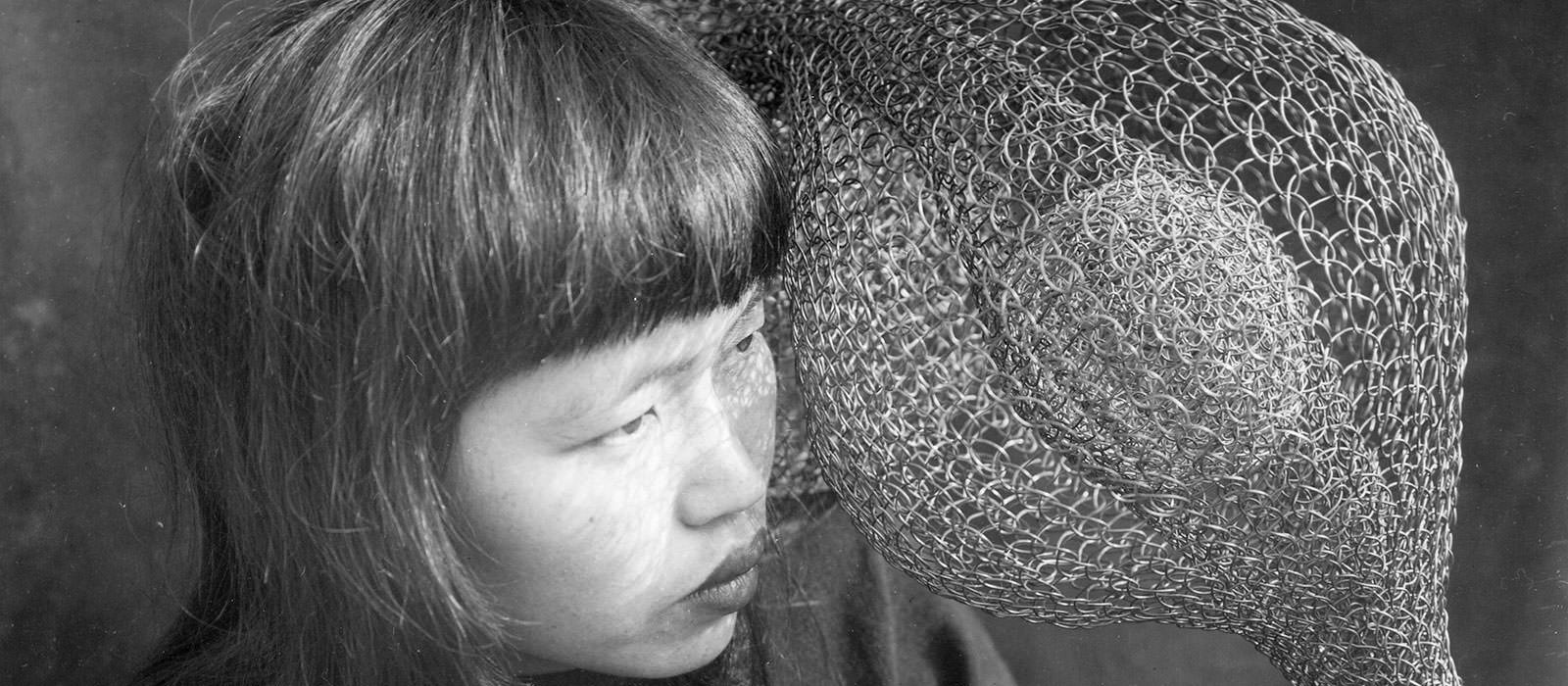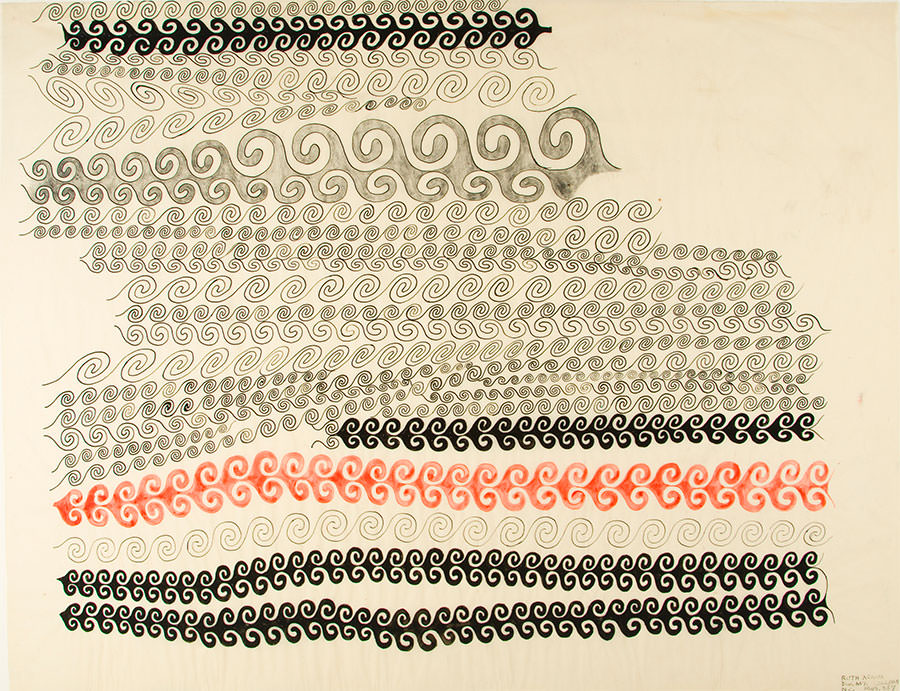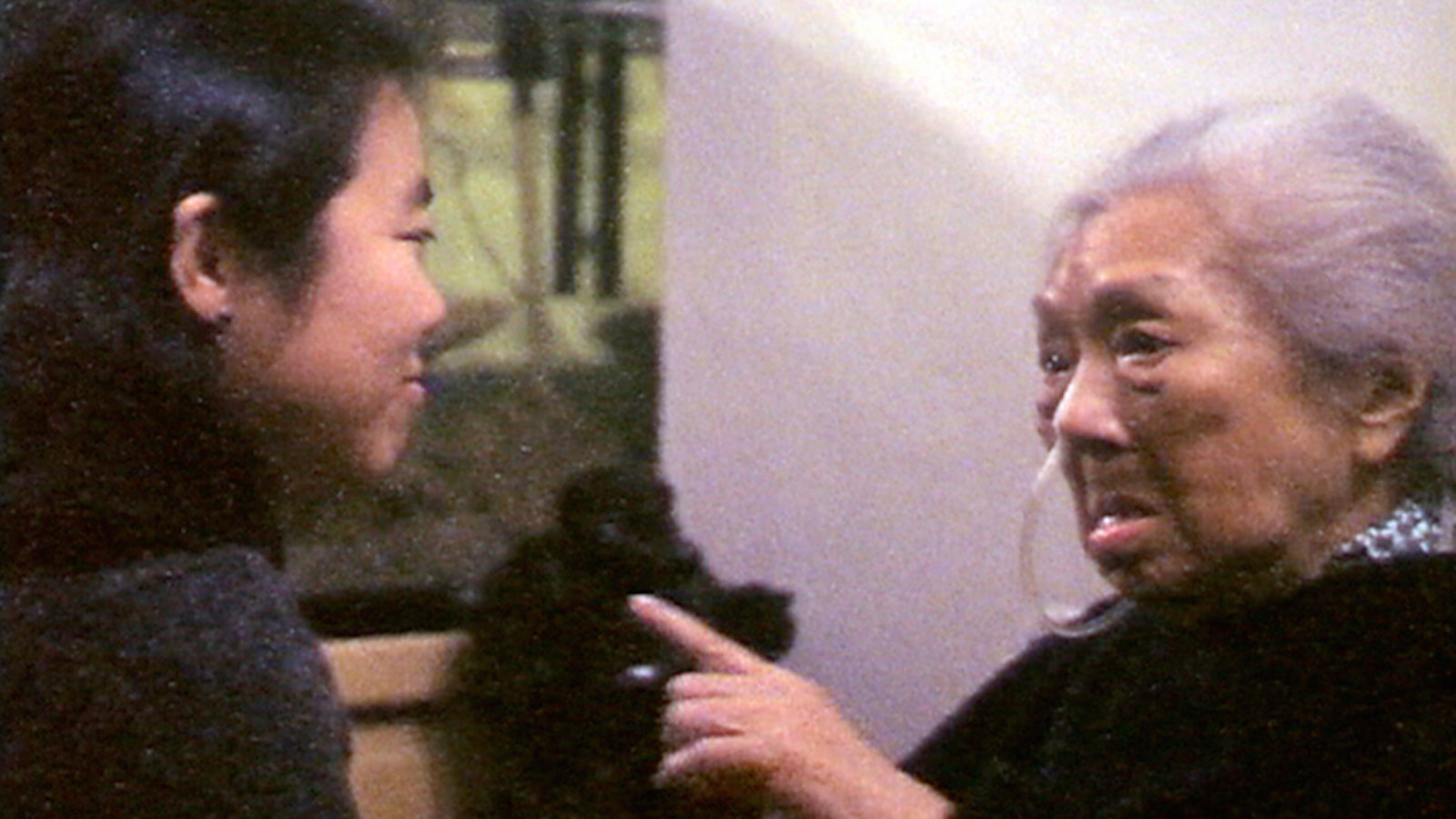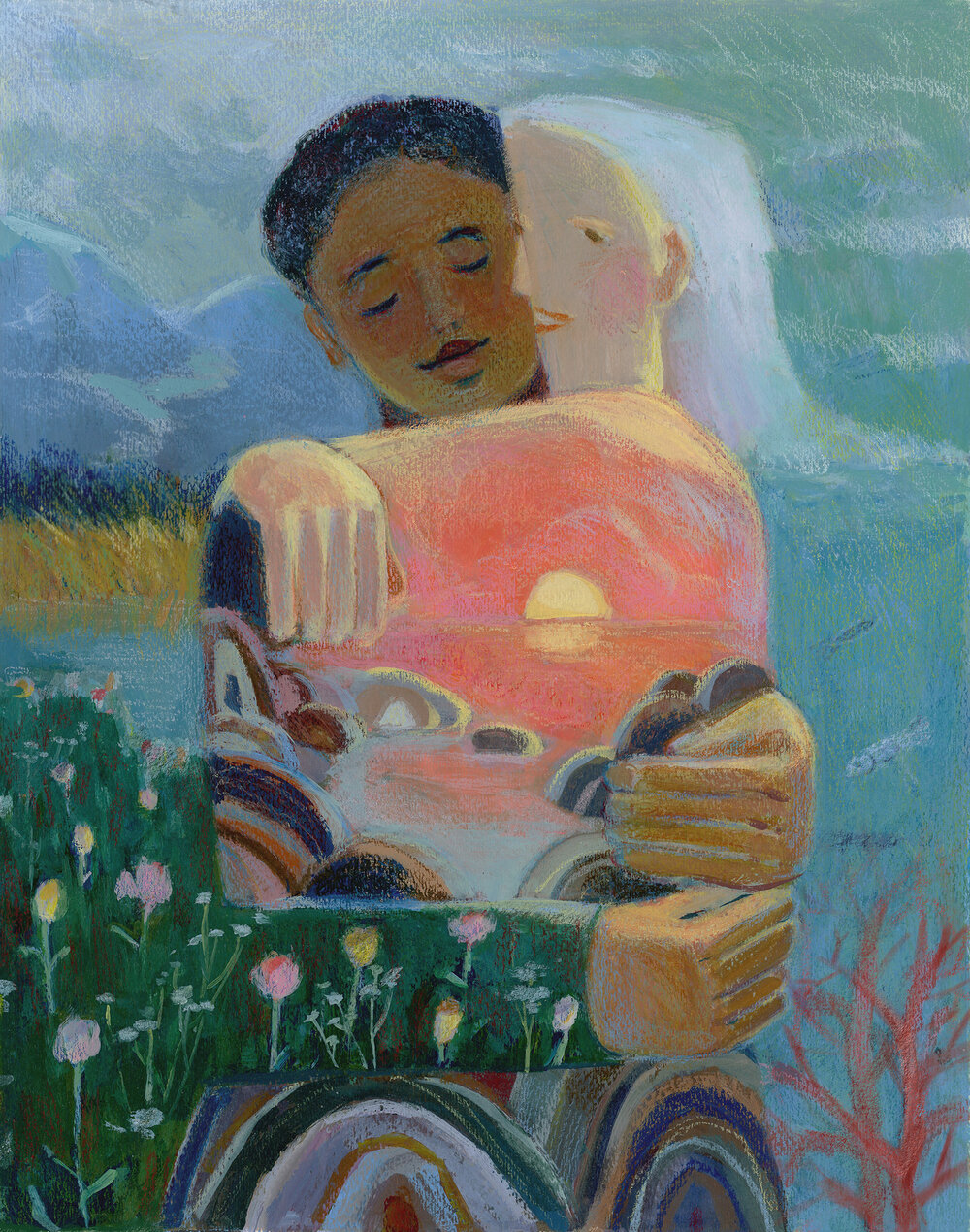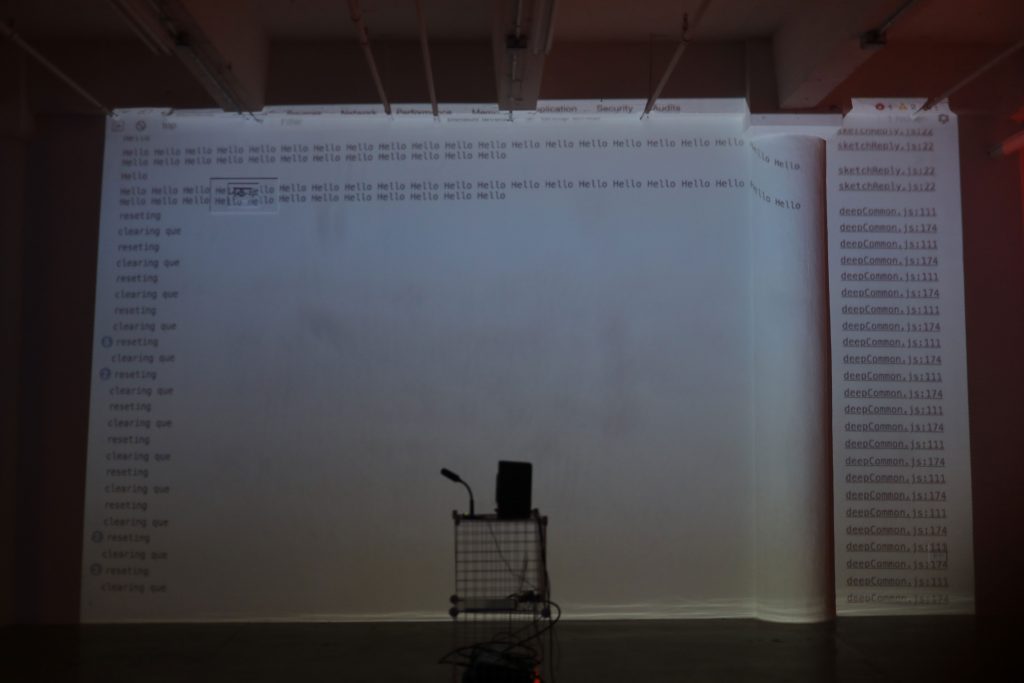
Jaishri Abichandani
-
 Jaishri Abichandani: Wonder Kali
by
"The article presents profile of curator Jaishri Abichandani. Topics include use of motifs and symbols of feminism to imagine radical, alternative existences by Abichandani; her sculpture "Holy Family" featuring a nude lesbian couple with gold nose rings, jewelry and roses braided around their calves and feet; and her upcoming art exhibition at the Craft and Folk Art Museum in Los Angeles, Claifornia in 2020."
Publication Date: 2018
Jaishri Abichandani: Wonder Kali
by
"The article presents profile of curator Jaishri Abichandani. Topics include use of motifs and symbols of feminism to imagine radical, alternative existences by Abichandani; her sculpture "Holy Family" featuring a nude lesbian couple with gold nose rings, jewelry and roses braided around their calves and feet; and her upcoming art exhibition at the Craft and Folk Art Museum in Los Angeles, Claifornia in 2020."
Publication Date: 2018
Ruth Asawa
-
A Life Made by Hand by Ruth Asawa (1926-2013) was an influential and award-winning sculptor, a beloved figure in the Bay Area art world, and a devoted activist who advocated tirelessly for arts education. This lushly illustrated book by collage artist Andrea D'Aquino brings Asawa's creative journey to life, detailing the influence of her childhood in a farming family, and her education at Black Mountain College where she pursued an experimental course of education with leading avant-garde artists and thinkerssuch as Anni and Josef Albers, Buckminster Fuller, Merce Cunningham, and Robert Rauschenberg. Delightful and substantial, this engaging title for young art lovers includes a page of teaching tools for parents and educators.
ISBN: 9781616898366Publication Date: 2019 -
Ruth Asawa - Life's Work by "Doing is living. That is all that matters."--Ruth Asawa Throughout her long and prolific career American artist Ruth Asawa (1926-2013) developed innovative sculptures in wire, a medium she explored through increasingly complex forms using craft-based techniques she learned while traveling in Mexico in 1947. In 1949, after studying at Black Mountain College, Asawa moved to San Francisco and created dozens of wire works, among them an iconic bronze fountain--the first of many public commissions--for the city's Ghirardelli Square. Bringing together examples from across Asawa's full and extraordinary career, this expansive volume serves as an unprecedented reorientation of her sculptures within the historical context of 20th-century art. In particular, it includes careful consideration of Asawa's advocacy for arts education in public schools, while simultaneously focusing on her vital--and long under-recognized--contributions to the field of sculpture. Insightful essays explore the intersection of formal experimentation and identity to offer a fresh assessment of this celebrated artist. Richly illustrated with exquisite new installation views, Ruth Asawa: Life's Work introduces original scholarship that traces the dynamic evolution of form in the artist's work.]]>
ISBN: 0300242697Publication Date: 2019 -
Ruth Asawa by Known for her extensive body of intricate and dynamic wire sculptures, American sculptor, educator, and arts activist Ruth Asawa challenged conventional notions of material and form through her emphasis on lightness and transparency. Asawa began her now iconic looped-wire works in the late 1940s while still a student at Black Mountain College. Their unique structure was inspired by a 1947 trip to Mexico, during which local craftsmen taught her how to create baskets out of wire. While seemingly unrelated to the lessons of color and composition taught in Josef Albers's legendary Basic Design course, these works, as she explained, are firmly grounded in his teachings in their use of unexpected materials and their elision of figure and ground. Presenting an important and timely overview of the artist's work, this monograph brings together a broad selection of her sculptures, works on paper, and more. Together the body of work demonstrates the centrality of Asawa's innovative practice to the art-historical legacy of the twentieth century. In addition to an incredible group of photographs of the artist and her work by Imogen Cunningham, a selection of rare archival materials will illustrate a chronology of the artist's life and work. Featuring an extensive text by Tiffany Bell which explores the artist's influences, history, and, most importantly, the work itself, as well as a significant essay by Robert Storr discussing Asawa's work in relation to mid-twentieth century art history, culture, and scientific theory.
Call Number: Q. 730.973 As14rISBN: 9781941701683Publication Date: 2018 -
The Sculpture of Ruth Asawa by The scope and stature of Ruth Asawa's work are brought into brilliant focus in this superb book, created to accompany the first complete retrospective of the artist's career. Beginning with her earliest works--drawings and paintings created in the 1940s while studying at Black Mountain College--this beautifully illustrated volume traces Asawa's trajectory as a pioneering modernist sculptor who is recognized nationally for her wire sculpture, public commissions, and activism in education and the arts. The Sculpture of Ruth Asawa establishes the importance of Asawa's work within the larger national context of artists who redefined art as a way of thinking and acting in the world rather than as merely a stylistic practice. A chronology and a collection of essays by noted scholars highlight Asawa's complex relationship to American art and Asian American history and provide engrossing biographical information. In her lifelong experimentations with wire, especially its capacity to balance open and closed forms, Asawa invented a powerful new vocabulary. Committed to enhancing the quality of daily life through art produced within the home, she contributed a unique perspective to the formal explorations of twentieth-century abstract sculpture. Working in a variety of non-traditional media, Asawa performed a series of uncanny metamorphoses, leading viewers into a deeper awareness of natural forms by revealing their structural properties. Through her artistic practice, Asawa reconnects with the Buddhist ethos of her parents, transforming the commonplace into metaphors for life processes themselves. Essays by Daniell Cornell, Emily Doman, Mary Emma Harris, Karin Higa, Jacqueline Hoefer, John Kriedler, Susan Stauter, and Sally Woodbridge Copub: Fine Arts Museums of San Francisco
ISBN: 9780520250451Publication Date: 2006
Anita Chang
-
 Joyful Life
by
JOYFUL LIFE is a feature documentary in collaboration with Hansen's disease (Leprosy) patients residing at Taiwan's Lo-Sheng ("Joyful Life"), one of the few remaining sanatoriums in the world, on the verge of disappearing. Lo-Sheng leprosy colony was established in 1930 on the Sinjuang hillside in the outskirts of Taipei, Taiwan's capital. As many as 1,100 patients lived in Lo-Sheng. In 1954, Lo-Sheng's isolation policy, which severely restricted residents' civil liberties, was finally lifted. As a result, leprosy patients had the choice to remain, to leave, or to self-admit, which deeply transformed the community. In 2002, more than one-third of Lo-Sheng was destroyed due to subway construction and other pending urban development projects. As a result, more than half of the 300 remaining residents moved into the newly constructed hospital nearby. Due to resident, student and human rights activism, plans for total destruction have stopped. At this point, the sanatorium remains despite continued pressures from the government, private interests and local civilians to excavate. Conceived as a collaboration among the residents of Lo-Sheng, a Taiwanese-American filmmaker, documentary students, and cultural workers, JOYFUL LIFE presents diverse perspectives of Lo-Sheng residents in the midst of their activism to preserve Lo-Sheng and not be moved to a nearby hospital. Filmmaker-led workshops prepare residents for their own storytelling and filming - creating an intimate portrait of a historically marginalized community and their inspiring determination to protect what they call their home.
Publication Date: 2007
Joyful Life
by
JOYFUL LIFE is a feature documentary in collaboration with Hansen's disease (Leprosy) patients residing at Taiwan's Lo-Sheng ("Joyful Life"), one of the few remaining sanatoriums in the world, on the verge of disappearing. Lo-Sheng leprosy colony was established in 1930 on the Sinjuang hillside in the outskirts of Taipei, Taiwan's capital. As many as 1,100 patients lived in Lo-Sheng. In 1954, Lo-Sheng's isolation policy, which severely restricted residents' civil liberties, was finally lifted. As a result, leprosy patients had the choice to remain, to leave, or to self-admit, which deeply transformed the community. In 2002, more than one-third of Lo-Sheng was destroyed due to subway construction and other pending urban development projects. As a result, more than half of the 300 remaining residents moved into the newly constructed hospital nearby. Due to resident, student and human rights activism, plans for total destruction have stopped. At this point, the sanatorium remains despite continued pressures from the government, private interests and local civilians to excavate. Conceived as a collaboration among the residents of Lo-Sheng, a Taiwanese-American filmmaker, documentary students, and cultural workers, JOYFUL LIFE presents diverse perspectives of Lo-Sheng residents in the midst of their activism to preserve Lo-Sheng and not be moved to a nearby hospital. Filmmaker-led workshops prepare residents for their own storytelling and filming - creating an intimate portrait of a historically marginalized community and their inspiring determination to protect what they call their home.
Publication Date: 2007 -
 62 Years and 65000 Miles Between
by
Amidst the political upheavals of a nation and the world, the filmmaker navigates cultural, geographical and linguistic distances in search of wisdom and hope from her 100 year-old Taiwanese activist grandmother (Ama). Artist Statement. 62 YEARS AND 6,500 MILES BETWEEN explores the discovery of my grandmother’s political sensibility just prior to her entering a full-care facility through the intimate details remembered by those closely associated with her, her award-winning autobiographical essay which was published in 1994 by the Taipei Women’s Rights Organization, and my own memories. As the film progresses, we hear history being told from various perspectives. Eventually, twists and turns develop along the way - the expectation that the camera is a reliable witness, or that the translation is accurate, the many facts that Ama left out of her biography, or that the biography was even written by Ama.The film reworks the documentary form with its own set of expectations, while investigating historical, social and political phenomena via the personal. This film specifically examines how a postcolonial people negotiate the memory and translation essential to the reconstruction and ultimately reclamation of a personal and national history. Translation and memory are the means by which we construct the past, yet both of these are delicate. For example, while emphasizing testimonials in light of an official history, I use images of contemporary Taiwan, instead of archival footage — reflecting how a postcolonial people can sometimes only reimagine their past. Finally, in the telling of this history perhaps the film will spark dialogue about the nonfiction canon that is deeply driven by our desire to represent history - revisted or as a moment in time; a memory - however vivid or fleeting; and truth - whether perceived or felt.
Publication Date: 2004
62 Years and 65000 Miles Between
by
Amidst the political upheavals of a nation and the world, the filmmaker navigates cultural, geographical and linguistic distances in search of wisdom and hope from her 100 year-old Taiwanese activist grandmother (Ama). Artist Statement. 62 YEARS AND 6,500 MILES BETWEEN explores the discovery of my grandmother’s political sensibility just prior to her entering a full-care facility through the intimate details remembered by those closely associated with her, her award-winning autobiographical essay which was published in 1994 by the Taipei Women’s Rights Organization, and my own memories. As the film progresses, we hear history being told from various perspectives. Eventually, twists and turns develop along the way - the expectation that the camera is a reliable witness, or that the translation is accurate, the many facts that Ama left out of her biography, or that the biography was even written by Ama.The film reworks the documentary form with its own set of expectations, while investigating historical, social and political phenomena via the personal. This film specifically examines how a postcolonial people negotiate the memory and translation essential to the reconstruction and ultimately reclamation of a personal and national history. Translation and memory are the means by which we construct the past, yet both of these are delicate. For example, while emphasizing testimonials in light of an official history, I use images of contemporary Taiwan, instead of archival footage — reflecting how a postcolonial people can sometimes only reimagine their past. Finally, in the telling of this history perhaps the film will spark dialogue about the nonfiction canon that is deeply driven by our desire to represent history - revisted or as a moment in time; a memory - however vivid or fleeting; and truth - whether perceived or felt.
Publication Date: 2004 -
 Tongues of Heaven
by
With 96% of the world’s population speaking only 4% of the world’s languages, what does it mean to speak your mother tongue in this age of language homogenization? Set in Taiwan and Hawai'i, territories where Austronesian languages are spoken, the experimental feature documentary TONGUES OF HEAVEN focuses on the questions, desires, and challenges of young indigenous peoples to learn the languages of their forebears — languages that are endangered or facing extinction. Using digital video as the primary medium of expression, four young indigenous women from divergent backgrounds collaborate and exchange ideas to consider the impact of language on identity and culture. As a cross-boundary filmmaking practice, TONGUES OF HEAVEN attempts to destabilize national, ethnic, and regional formations through an experimental aesthetics of the personal that establishes new connections and alliances within and outside the field of documentary filmmaking. As a result, it participates in presenting the contemporary (post)colonial conditions of Hawai’i and Taiwan, exposing differences and similarities, and proposing affinities and potential solidarities. The production methodology of collaborative personal camerawork reflects, refracts, and complicates notions of "native", "authenticity", "belonging", and "identity" through its personal, avant-garde expression and techniques, and thus makes a modest contribution to approaches in autoethnographic audio-visual productions.
Publication Date: 2013
Tongues of Heaven
by
With 96% of the world’s population speaking only 4% of the world’s languages, what does it mean to speak your mother tongue in this age of language homogenization? Set in Taiwan and Hawai'i, territories where Austronesian languages are spoken, the experimental feature documentary TONGUES OF HEAVEN focuses on the questions, desires, and challenges of young indigenous peoples to learn the languages of their forebears — languages that are endangered or facing extinction. Using digital video as the primary medium of expression, four young indigenous women from divergent backgrounds collaborate and exchange ideas to consider the impact of language on identity and culture. As a cross-boundary filmmaking practice, TONGUES OF HEAVEN attempts to destabilize national, ethnic, and regional formations through an experimental aesthetics of the personal that establishes new connections and alliances within and outside the field of documentary filmmaking. As a result, it participates in presenting the contemporary (post)colonial conditions of Hawai’i and Taiwan, exposing differences and similarities, and proposing affinities and potential solidarities. The production methodology of collaborative personal camerawork reflects, refracts, and complicates notions of "native", "authenticity", "belonging", and "identity" through its personal, avant-garde expression and techniques, and thus makes a modest contribution to approaches in autoethnographic audio-visual productions.
Publication Date: 2013
-
Anita Chang Oral History Interview 2009 interview with filmmaker Anita Chang by Lauren Smith. For more information on the artist visit: http://anitachangworks.com/

Zheng Chongbin
-
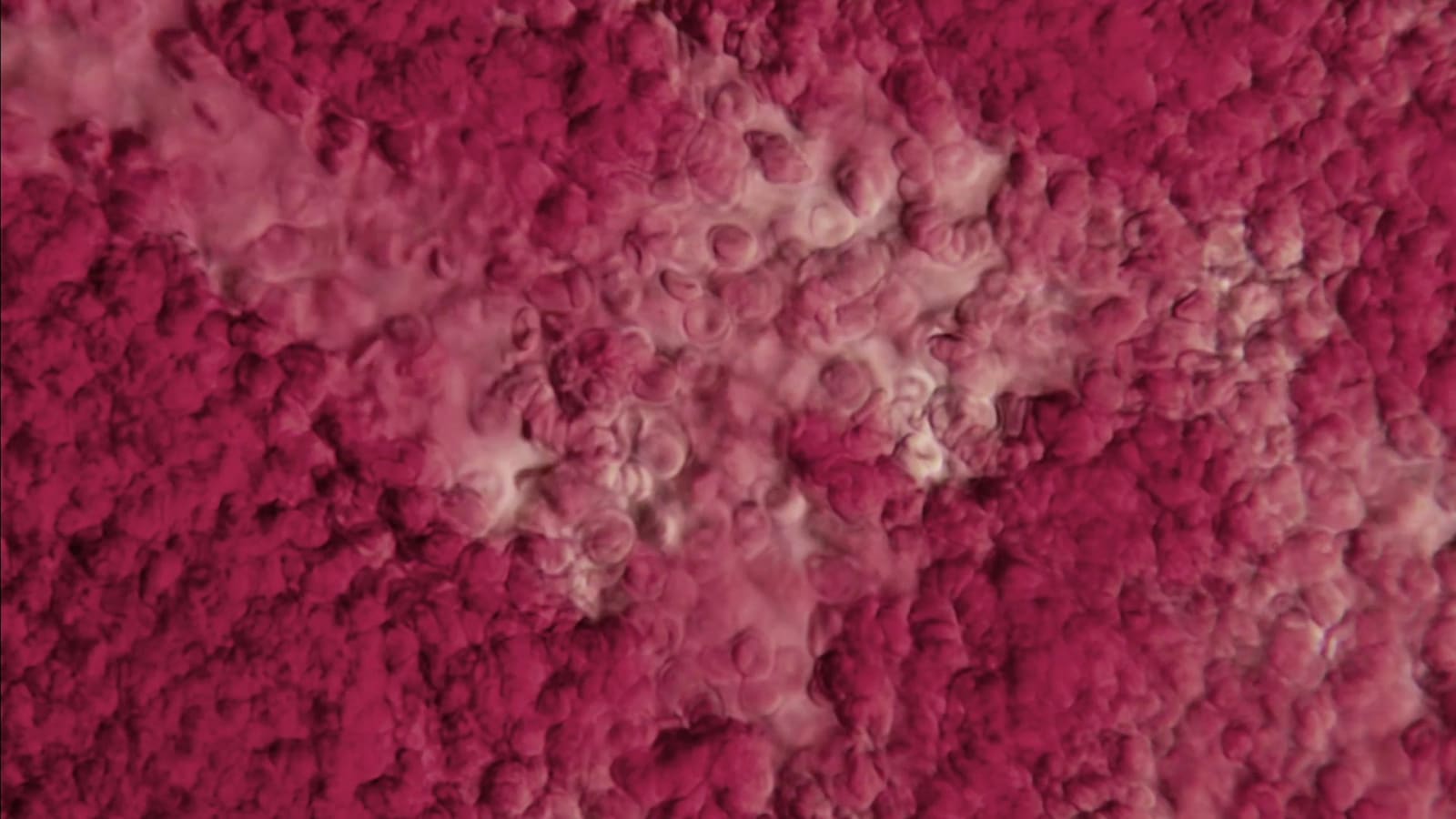 Liquid Space: A Conversation with Zheng Chongbin
by
Publication Date: 2019
Liquid Space: A Conversation with Zheng Chongbin
by
Publication Date: 2019 -
 Materials of Inspiration
by
Publication Date: 2017
Materials of Inspiration
by
Publication Date: 2017
Jes Fan
-
 States of Flux: A Conversation with Jes Fan
by
An interview is presented with Canadian artist Jes Fan. Topics discussed include focus of Fan on vision including abstract systems that allude to gender and racial distinctions as well as to outer and inner structures, merging art, science, philosophy, and cultural histories; liminality of being a biological body in an age when the body is reconfigured in terms of the molecular, the digital, and the informational; and use of using Three Dimensional (3D) in printing body parts.
Publication Date: 2020
States of Flux: A Conversation with Jes Fan
by
An interview is presented with Canadian artist Jes Fan. Topics discussed include focus of Fan on vision including abstract systems that allude to gender and racial distinctions as well as to outer and inner structures, merging art, science, philosophy, and cultural histories; liminality of being a biological body in an age when the body is reconfigured in terms of the molecular, the digital, and the informational; and use of using Three Dimensional (3D) in printing body parts.
Publication Date: 2020
Kimsooja
-
Kimsooja: Unfolding by The South Korean contemporary artist Kimsooja (*1957 in Taegu) has attracted a great deal of attention for her sculptures, performances, and interventions captured on video, as well as for her numerous solo exhibitions around the world. One of the fundamental concepts behind her work is the way in which she examines the everyday aspects of life and human exchange in her two- or three-dimensional works of art. A central element of her work has been the bottari, a traditional silk bedcover that also serves as a traveling bundle, protecting one's worldly goods. In Korea, these are traditionally hand-sewn--women's work that spans generations and unites individuals.Doing laundry or sewing, as well as a series of the artist's symbolic performances--such as her role as "Needle Woman" or "Beggar Woman"--are at the core of Kimsooja's work, in which she also reflects on the female human condition. This is the first monograph to present an overview of the artist's most significant works across three decades.
Call Number: Q. 709.5190905 K56ksjISBN: 9783775732345Publication Date: 2014 -
 Kimsooja: To breathe - Zone of zero
by
Kimsooja is a South Korean multi-disciplinary conceptual artist. This catalogue marks the occasion of her site-specific installation and exhibition at CAC Málaga. Considering her country's rapid transformation into a modern economic powerhouse, Kimsooja's work addresses complex questions of human existence in this process: essential, fragile aspects of life, such as ritual and ceremony, that are interrupted or sacrificed. In her oeuvre, individualism and the role of women point to themes of respect for others and a sense of (global) humanity as she generates convergences that stress human emotions, without taking borders or places of origin into account.
ISBN: 8494435485Publication Date: 2016
Kimsooja: To breathe - Zone of zero
by
Kimsooja is a South Korean multi-disciplinary conceptual artist. This catalogue marks the occasion of her site-specific installation and exhibition at CAC Málaga. Considering her country's rapid transformation into a modern economic powerhouse, Kimsooja's work addresses complex questions of human existence in this process: essential, fragile aspects of life, such as ritual and ceremony, that are interrupted or sacrificed. In her oeuvre, individualism and the role of women point to themes of respect for others and a sense of (global) humanity as she generates convergences that stress human emotions, without taking borders or places of origin into account.
ISBN: 8494435485Publication Date: 2016 -
Kimsooja by Published in conjunction with the exhibition 'Kimsooja: weaving the world' held at the Kunstmuseum Liechtenstein, Vaduz, September 22, 2017-January 21, 2018. Volume sequence based specifications on colophon.
ISBN: 9783960983477Publication Date: 2018

